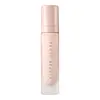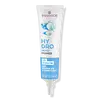What's inside
What's inside
 Key Ingredients
Key Ingredients

 Benefits
Benefits

 Concerns
Concerns

 Ingredients Side-by-side
Ingredients Side-by-side

Water
Skin ConditioningDimethicone
EmollientIsododecane
EmollientGlycerin
HumectantCetyl PEG/PPG-10/1 Dimethicone
EmulsifyingPentaerythrityl Tetraisostearate
EmollientPolymethylsilsesquioxane
Nylon-12
Phenoxyethanol
PreservativeDimethicone/Vinyl Dimethicone Crosspolymer
Skin ConditioningSodium Chloride
MaskingTalc
AbrasiveMagnesium Sulfate
Sodium Dehydroacetate
PreservativeDisteardimonium Hectorite
StabilisingBenzoic Acid
MaskingTocopheryl Acetate
AntioxidantDehydroacetic Acid
PreservativePropylene Carbonate
SolventHydrogen Dimethicone
Ethylhexylglycerin
Skin ConditioningParfum
MaskingAluminum Hydroxide
EmollientCoral Powder
AbrasiveSodium Hyaluronate
HumectantXanthan Gum
EmulsifyingCI 77891
Cosmetic ColorantIron Oxides
Water, Dimethicone, Isododecane, Glycerin, Cetyl PEG/PPG-10/1 Dimethicone, Pentaerythrityl Tetraisostearate, Polymethylsilsesquioxane, Nylon-12, Phenoxyethanol, Dimethicone/Vinyl Dimethicone Crosspolymer, Sodium Chloride, Talc, Magnesium Sulfate, Sodium Dehydroacetate, Disteardimonium Hectorite, Benzoic Acid, Tocopheryl Acetate, Dehydroacetic Acid, Propylene Carbonate, Hydrogen Dimethicone, Ethylhexylglycerin, Parfum, Aluminum Hydroxide, Coral Powder, Sodium Hyaluronate, Xanthan Gum, CI 77891, Iron Oxides
Water
Skin ConditioningSilica
AbrasiveDicaprylyl Carbonate
EmollientCoco-Caprylate/Caprate
EmollientCetearyl Olivate
Glycerin
HumectantDimethicone
EmollientIsoamyl Laurate
EmollientNiacinamide
SmoothingPentylene Glycol
Skin ConditioningSorbitan Olivate
EmulsifyingXylitylglucoside
HumectantCucumis Sativus Juice
EmollientPanthenol
Skin ConditioningSodium Hyaluronate
HumectantAnhydroxylitol
HumectantPropylene Glycol
HumectantTocopheryl Acetate
AntioxidantXylitol
HumectantAllantoin
Skin ConditioningBetaine
HumectantCocos Nucifera Fruit Juice
EmollientEthylhexylglycerin
Skin ConditioningSodium Sulfite
PreservativeLactic Acid
BufferingSodium Hydroxide
BufferingPhosphoric Acid
BufferingCitric Acid
BufferingPhenoxyethanol
PreservativeSodium Benzoate
MaskingPotassium Sorbate
PreservativeParfum
MaskingWater, Silica, Dicaprylyl Carbonate, Coco-Caprylate/Caprate, Cetearyl Olivate, Glycerin, Dimethicone, Isoamyl Laurate, Niacinamide, Pentylene Glycol, Sorbitan Olivate, Xylitylglucoside, Cucumis Sativus Juice, Panthenol, Sodium Hyaluronate, Anhydroxylitol, Propylene Glycol, Tocopheryl Acetate, Xylitol, Allantoin, Betaine, Cocos Nucifera Fruit Juice, Ethylhexylglycerin, Sodium Sulfite, Lactic Acid, Sodium Hydroxide, Phosphoric Acid, Citric Acid, Phenoxyethanol, Sodium Benzoate, Potassium Sorbate, Parfum
Ingredients Explained
These ingredients are found in both products.
Ingredients higher up in an ingredient list are typically present in a larger amount.
Dimethicone is a type of synthetic silicone created from natural materials such as quartz.
What it does:
Dimethicone comes in different viscosities:
Depending on the viscosity, dimethicone has different properties.
Ingredients lists don't always show which type is used, so we recommend reaching out to the brand if you have questions about the viscosity.
This ingredient is unlikely to cause irritation because it does not get absorbed into skin. However, people with silicone allergies should be careful about using this ingredient.
Note: Dimethicone may contribute to pilling. This is because it is not oil or water soluble, so pilling may occur when layered with products. When mixed with heavy oils in a formula, the outcome is also quite greasy.
Learn more about DimethiconeEthylhexylglycerin (we can't pronounce this either) is commonly used as a preservative and skin softener. It is derived from glyceryl.
You might see Ethylhexylglycerin often paired with other preservatives such as phenoxyethanol. Ethylhexylglycerin has been found to increase the effectiveness of these other preservatives.
Glycerin is already naturally found in your skin. It helps moisturize and protect your skin.
A study from 2016 found glycerin to be more effective as a humectant than AHAs and hyaluronic acid.
As a humectant, it helps the skin stay hydrated by pulling moisture to your skin. The low molecular weight of glycerin allows it to pull moisture into the deeper layers of your skin.
Hydrated skin improves your skin barrier; Your skin barrier helps protect against irritants and bacteria.
Glycerin has also been found to have antimicrobial and antiviral properties. Due to these properties, glycerin is often used in wound and burn treatments.
In cosmetics, glycerin is usually derived from plants such as soybean or palm. However, it can also be sourced from animals, such as tallow or animal fat.
This ingredient is organic, colorless, odorless, and non-toxic.
Glycerin is the name for this ingredient in American English. British English uses Glycerol/Glycerine.
Learn more about GlycerinParfum is a catch-all term for an ingredient or more that is used to give a scent to products.
Also called "fragrance", this ingredient can be a blend of hundreds of chemicals or plant oils. This means every product with "fragrance" or "parfum" in the ingredients list is a different mixture.
For instance, Habanolide is a proprietary trade name for a specific aroma chemical. When used as a fragrance ingredient in cosmetics, most aroma chemicals fall under the broad labeling category of “FRAGRANCE” or “PARFUM” according to EU and US regulations.
The term 'parfum' or 'fragrance' is not regulated in many countries. In many cases, it is up to the brand to define this term.
For instance, many brands choose to label themselves as "fragrance-free" because they are not using synthetic fragrances. However, their products may still contain ingredients such as essential oils that are considered a fragrance by INCI standards.
One example is Calendula flower extract. Calendula is an essential oil that still imparts a scent or 'fragrance'.
Depending on the blend, the ingredients in the mixture can cause allergies and sensitivities on the skin. Some ingredients that are known EU allergens include linalool and citronellol.
Parfum can also be used to mask or cover an unpleasant scent.
The bottom line is: not all fragrances/parfum/ingredients are created equally. If you are worried about fragrances, we recommend taking a closer look at an ingredient. And of course, we always recommend speaking with a professional.
Learn more about ParfumPhenoxyethanol is a preservative that has germicide, antimicrobial, and aromatic properties. Studies show that phenoxyethanol can prevent microbial growth. By itself, it has a scent that is similar to that of a rose.
It's often used in formulations along with Caprylyl Glycol to preserve the shelf life of products.
Sodium Hyaluronate is hyaluronic acid's salt form. It is commonly derived from the sodium salt of hyaluronic acid.
Like hyaluronic acid, it is great at holding water and acts as a humectant. This makes it a great skin hydrating ingredient.
Sodium Hyaluronate is naturally occurring in our bodies and is mostly found in eye fluid and joints.
These are some other common types of Hyaluronic Acid:
Learn more about Sodium HyaluronateTocopheryl Acetate is AKA Vitamin E. It is an antioxidant and protects your skin from free radicals. Free radicals damage the skin by breaking down collagen.
One study found using Tocopheryl Acetate with Vitamin C decreased the number of sunburned cells.
Tocopheryl Acetate is commonly found in both skincare and dietary supplements.
Learn more about Tocopheryl AcetateWater. It's the most common cosmetic ingredient of all. You'll usually see it at the top of ingredient lists, meaning that it makes up the largest part of the product.
So why is it so popular? Water most often acts as a solvent - this means that it helps dissolve other ingredients into the formulation.
You'll also recognize water as that liquid we all need to stay alive. If you see this, drink a glass of water. Stay hydrated!
Learn more about Water